Zongzi, a traditional Chinese rice dumpling wrapped in bamboo leaves, holds a cherished place in culinary history, particularly during the Dragon Boat Festival. While glutinous rice is the most common grain used in its preparation, glutinous millet (also known as yellow sticky millet or proso millet) has gained popularity for its unique texture, nutritional benefits, and gluten-free properties. A critical step in achieving the perfect zongzi is mastering the soaking time for glutinous millet—a process that influences texture, flavor, and cooking efficiency. This article delves into the science, techniques, and cultural nuances of soaking glutinous millet for zongzi, ensuring both novice and experienced cooks can achieve flawless results.
Understanding Glutinous Millet: A Brief Overview
Glutinous millet, despite its name, contains no gluten. The term “glutinous” refers to its sticky texture when cooked, a result of high amylopectin starch content. This ancient grain, cultivated for millennia in Asia and Europe, boasts a mild, nutty flavor and a golden hue that distinguishes it from white glutinous rice. Nutritionally, it is a powerhouse, rich in dietary fiber, B vitamins, iron, and magnesium. Its low glycemic index and gluten-free nature make it an excellent alternative for those with dietary restrictions.
When used in zongzi, glutinous millet imparts a heartier, slightly chewy texture compared to rice, paired with a delicate sweetness that complements both sweet and savory fillings. However, achieving the ideal consistency hinges on proper preparation—starting with soaking.
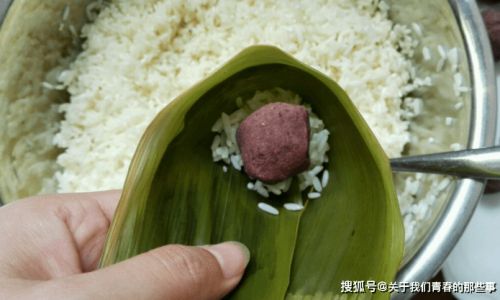
The Science Behind Soaking: Why Timing Matters
Soaking glutinous millet serves two primary purposes: hydration and starch gelatinization. Dry millet grains are compact, with starch molecules tightly packed. Soaking allows water to penetrate the grain, softening the outer bran layer and initiating the breakdown of complex starches into simpler sugars. This process, known as gelatinization, occurs when starch granules absorb water and swell, leading to a softer, more pliable texture during cooking.
The duration of soaking directly impacts these processes:
- Insufficient soaking results in underhydrated grains, which may remain firm or crunchy after cooking.
- Excessive soaking can cause the grains to become overly soft, mushy, or prone to breaking apart during wrapping.
Environmental factors, such as room temperature and water quality, also play roles. Warmer water accelerates hydration, while cold water slows it down. Additionally, the age and quality of the millet affect soaking time—older grains may require longer to absorb moisture adequately.
Factors Influencing Soaking Time
-
Temperature of Water:
- Room Temperature (68–72°F/20–22°C): The standard soaking method, requiring 8–12 hours for optimal hydration.
- Warm Water (100–110°F/38–43°C): Reduces soaking time to 4–6 hours but requires careful monitoring to avoid premature fermentation.
- Cold Water (40–50°F/4–10°C): Extends soaking to 12–24 hours, ideal for meal prepping.
-
Desired Texture:
- Al Dente: Short soak (4–6 hours) for a slightly firm, chewy zongzi.
- Tender: Medium soak (8–12 hours) for a balanced texture.
- Very Soft: Long soak (12–24 hours) for melt-in-the-mouth consistency.
-
Recipe Variations:
- Sweet zongzi (e.g., red bean paste filling) may benefit from shorter soaking to retain grain integrity.
- Savory zongzi (e.g., pork or mushroom) often require longer soaking to absorb richer flavors.
-
Altitude and Humidity:
- High-altitude areas may need adjusted soaking times due to lower boiling points affecting cooking.
- Humid climates can cause millet to absorb moisture faster, potentially shortening soaking duration.
Recommended Soaking Times: A Detailed Breakdown
Quick Soak (4–6 Hours)
- Ideal For: Last-minute preparations or those preferring a firmer texture.
- Method: Submerge millet in warm water (100–110°F/38–43°C). Stir occasionally to ensure even hydration.
- Pros: Time-efficient, retains grain structure.
- Cons: May yield slightly uneven texture; risk of underhydration if not monitored.
Standard Soak (8–12 Hours)
- Ideal For: Most zongzi recipes, balancing convenience and texture.
- Method: Use room-temperature water. Cover the bowl to prevent contamination.
- Pros: Consistent results, versatile for various fillings.
- Cons: Requires advance planning.
Extended Soak (12–24 Hours)
- Ideal For: Traditional recipes, very soft texture, or meal prepping.
- Method: Soak in cold water, refrigerated to prevent fermentation. Change water every 6–8 hours.
- Pros: Ultra-tender grains, enhanced flavor absorption.
- Cons: Risk of over-soaking; labor-intensive water changes.
Step-by-Step Guide to Soaking and Preparing Glutinous Millet Zongzi
-
Measure the Millet:
Use a 1:1.5 ratio of millet to water (e.g., 2 cups millet to 3 cups water).
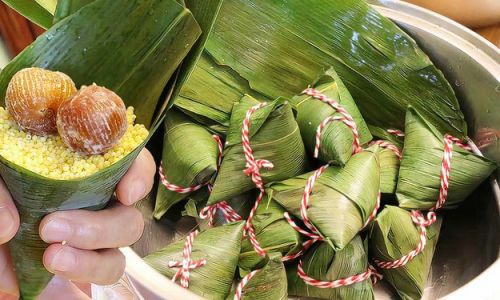
-
Rinse the Grains:
Place millet in a fine-mesh strainer and rinse under cold water until the water runs clear. This removes excess starch and debris.
-
Soak the Millet:
- Transfer to a bowl and cover with water. Add a pinch of salt to enhance flavor (optional).
- Follow the soaking time based on your chosen method (quick, standard, or extended).
-
Drain and Prepare Fillings:
Drain the millet in a colander 30 minutes before cooking. Prepare fillings (e.g., soaked mung beans, marinated meat) during this time.
-
Wrap the Zongzi:
Layer soaked bamboo leaves, add a spoonful of millet, followed by fillings, and seal tightly.
-
Cook the Zongzi:
Simmer in a large pot for 2–3 hours, or until leaves peel away easily.
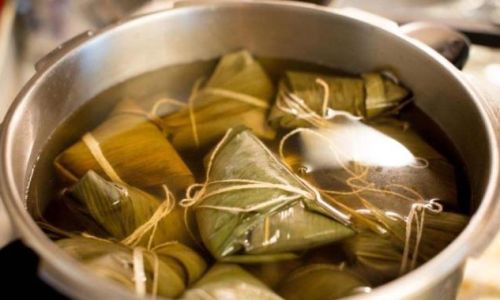
Troubleshooting Common Soaking Issues
-
Over-Soaked Millet:
- Symptoms: Mushy texture, broken grains.
- Solution: Reduce future soaking time by 25%. Use over-soaked millet in porridges or pancakes instead of zongzi.
-
Under-Soaked Millet:
- Symptoms: Hard centers, uneven cooking.
- Solution: Increase soaking time or parboil millet for 5 minutes before wrapping.
-
Uneven Hydration:
- Symptoms: Some grains soft, others firm.
- Solution: Stir millet during soaking and ensure water covers grains by at least 1 inch.
Cultural and Regional Variations
In northern China, glutinous millet zongzi are often savory, stuffed with mung beans, jujubes, or chestnuts, reflecting the region’s agricultural heritage. Southern regions may incorporate pork belly or salted egg yolks, with soaking times adjusted to accommodate richer fillings. In Korea, songpyeon (a half-moon rice cake) uses glutinous millet soaked in honeyed water, while Japanese mochi variations sometimes substitute millet for rice, requiring shorter soaking due to different starch profiles.
Storage and Make-Ahead Tips
- Soaked Millet: Can be refrigerated for up to 48 hours if water is changed every 12 hours.
- Uncooked Zongzi: Freeze wrapped dumplings for up to 3 months; thaw before cooking.
- Cooked Zongzi: Store in an airtight container for 3–4 days; reheat by steaming or simmering.
Conclusion: The Art of Patience and Precision
Mastering the soaking time for glutinous millet is a blend of science and tradition. While guidelines provide a roadmap, personal preference ultimately dictates the perfect zongzi. Experiment with soaking durations, textures, and fillings to discover your signature style. Whether you opt for a quick soak on a busy weekday or an overnight ritual steeped in heritage, the result is a culinary treasure that bridges generations and cultures.
In a world of instant gratification, the deliberate act of soaking glutinous millet reminds us that some things—like zongzi—are worth the wait. So, measure your grains, set your timer, and embrace the journey from humble millet to golden, leaf-wrapped delight.
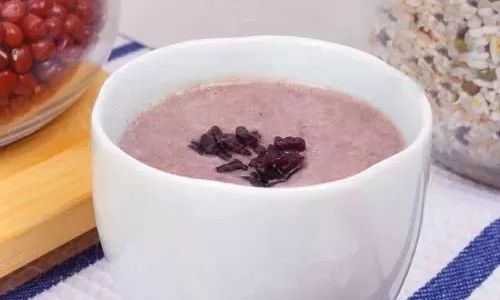
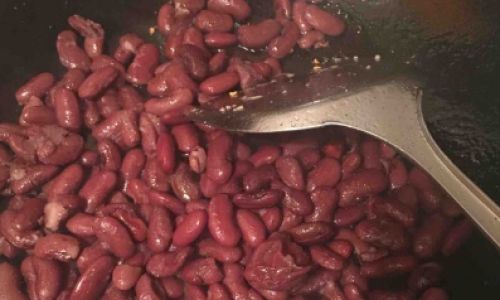
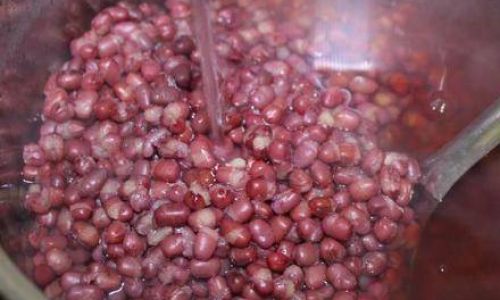



0 comments